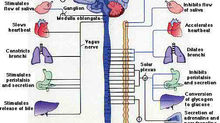Neurophysiological Hypnotic Theory. Attention Control Systems.
- tomjlynam

- Jan 17, 2015
- 2 min read
Sheffield Hypnotherapy
Welcome to the next post visiting hypnotic theories. Today we are keeping with investigation of 'state theories' which are theories proposing that the trance state experienced suring hypnotherapy is a specific one, a phenomena and altered state of mind not associated with 'normal' functioning.
Gruzlier formulated the Neurophysiological theory of hypnosis. The content suggests that people of high hypnotisable disposition have more control over their excutive functions than those who are low hypnotisable. People vary in their ability to be hypnotised, although this is rather a moving target which fluctuates according to time, place, mental state and the methods beign employed by the hypnotherapst. Gruzlier went on to say that those having good executive function (planning, logic, reason) are able to divide their attnetion more readily. Changes in the way in which the mind focuses its attention, and utilises its attention control system, which we will cover briefly later, makes the individual more likely to respond to suggestion.
Gruzlier was able to actually test the corrolation between high hypnotisibles and advanced executive ability using medical imaging and mapping techniques. The focus of the individuals attention moves through three phases en route to the hypnotic state. First, when the individual is listening to the hypnotherapist, focus is given to the fronto-limbic system, primarily located on the left of the frontal lobe. Second, as the indivudual gives up controlled attention activity on the left side decreases leading to the third phase in which activity on the right sided temporo posterior systems are stimulated through passive imagery (visualisations, guided imagery). Having to use different aspects of attention control to deal with different attentional demands, associated parts of the brain become exhausted, leading to the hypnotic state; specifically in high hypnotisibles.
Attentional Control: Essentially this is a person's ability to control what they pay attention to. Attentional control can be broke down into three broad categories; alertness, which refers to how aware the person is; orientation, how able someone is to process sensory input in relation to their environment; and executive control which deals with resolving cognitive conflict and reducing dissonance. Facets of the attention control systems develop into adulthood, with people showing an increase in ability to control their attention with a predictable decline later in life. Poor attentional control is associated with a variety of cognitive illnesses and impairment including, ADHD, depression, social anxiety, schizophrenia and alzheimers.









Comments